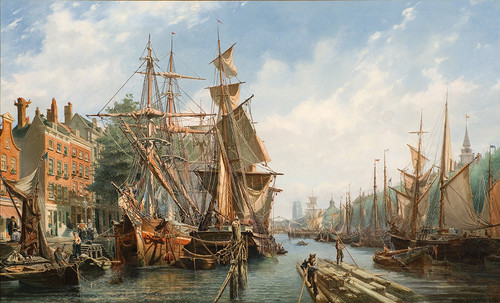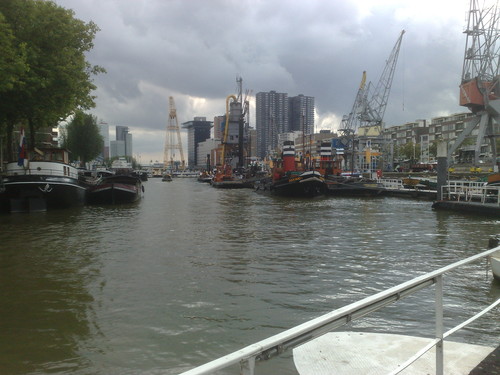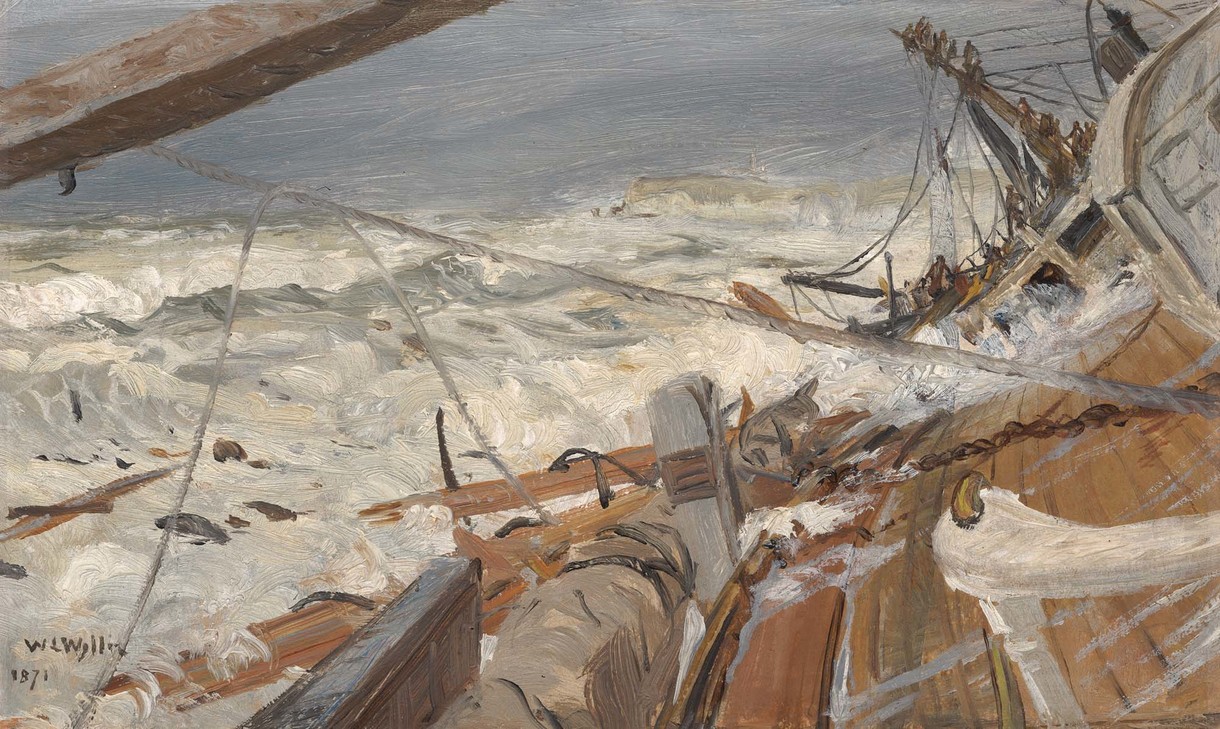B.
Then and now
Behind the scenes
Last year the Gallery acquired this magnificent early work by Petrus van der Velden:

Petrus van der Velden The Leuvehaven, Rotterdam 1867. Oil on canvas. Collection of Christchurch Art Gallery Te Puna o Waiwhetū; purchased 2010, with assistance from Gabrielle Tasman in memory of Adriaan and the Olive Stirrat bequest. Purchase supported by Christchurch City Council's Challenge Grant to Christchurch Art Gallery Trust.
I was lucky enough to visit Rotterdam recently and can report that the scene now looks like this:

Photo: Tim Jones
The whole area, once the commercial heart of Rotterdam, is now the maritime part of Rotterdam's Maritime Museum. The port itself, still Europe's biggest, has moved far downstream, while this area is now, by Rotterdam's standards, a picturesque setting for a range of historic tugs, barges, fishing boats and other commercial vessels.
In fact these two views look down the Leuvehaven in opposite directions; van der Velden would have been standing about where the yellow triangular crane is, looking back this way. The square tower of St Laurence's church is the evidence for this: in the distance of the painting, but behind me when I took the photograph.
The whole area was obliterated during the Second World War, and its subsequent re-construction means that it is no longer possible to stand where van der Velden stood, let alone to re-create what he saw.

